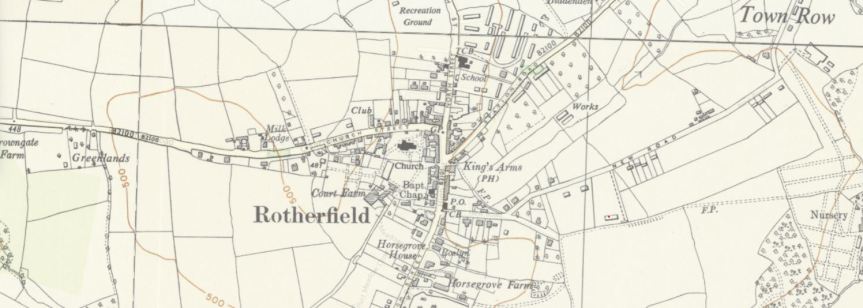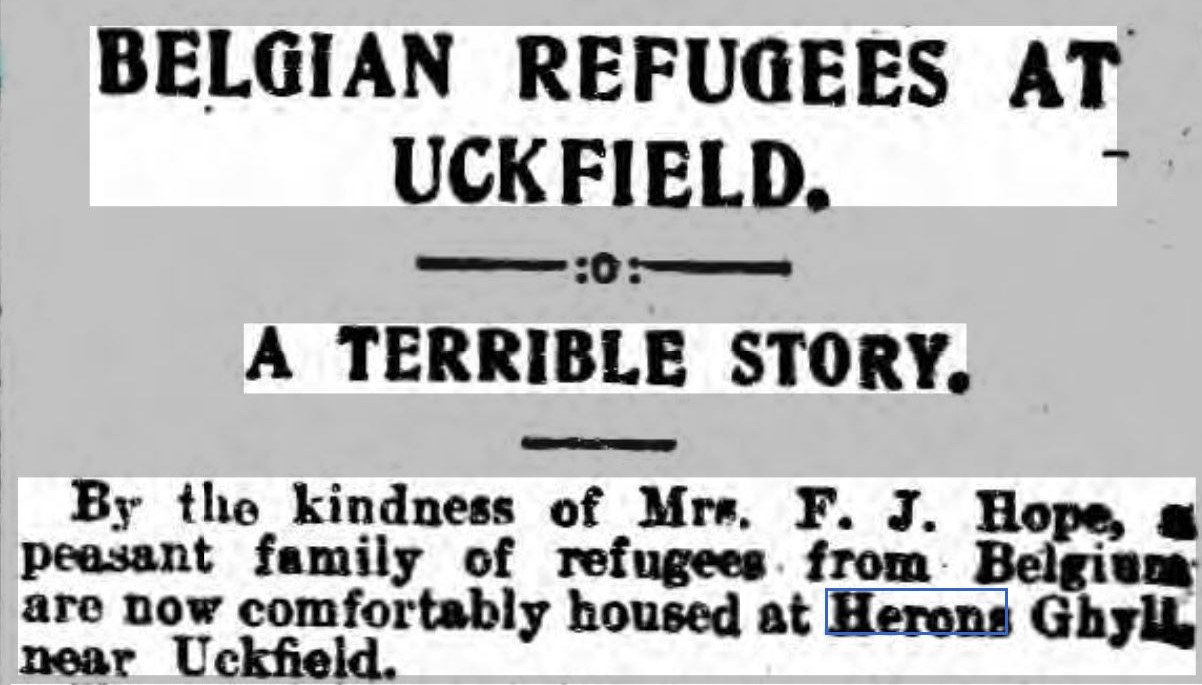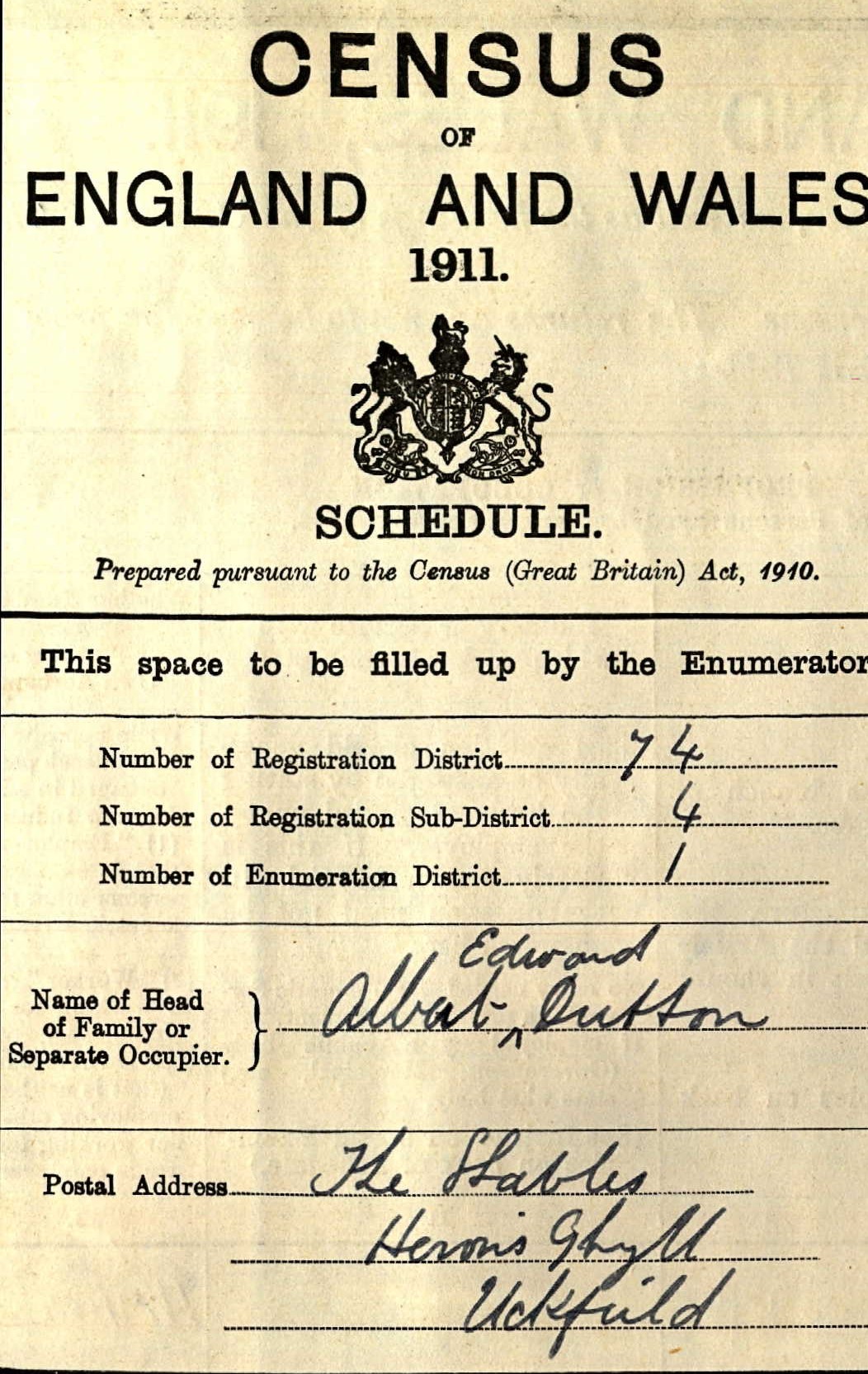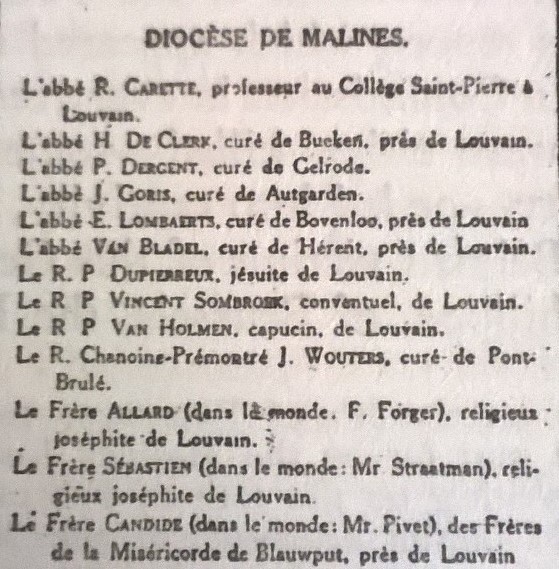Happy New Year – 2021, 2022, and 2023…
For many years, a house in Rotherfield (link to village Wikipedia page), my local village, was known as Malines Cottage (1) after the refugees from the town of Malines (Mechelen) in Belgium who lived there during the First World War, and I’ve been trying to find them, prompted by a query from the house’s current owners. It’s still a work in progress, but I think I’m getting somewhere, and so I thought I’d jot down what I’ve found so far and wake this blog up again!
First port of call was of course the British Newspaper Archive to see what was reported at the time. Not much specific to the village, but enough to get me started. On the 11th August 1916, the Kent and Sussex Courier reported the closure of the fund set up to support the “Belgian fugitives”.

The article went on to report that the village had supported 27 people, 16 entirely and the other 11 as needed. By August 1916, three had returned to Belgium, eight gone to Holland, one was working in London, another in Nuneaton, five were in the north of England, three were in London awaiting their return to Belgium, one was at Mark Cross convent, and one family, presumably the remaining five people, was still in the village but self-supporting. A brief article the following week also mentioned that two houses had been generously given rent-free. I wonder which the second was.
Unfortunately there were no names in either article for the Belgian guests, only for the local people who had helped them – Miss ROLL and Miss WHITE who had administered the Fund, and Mr F. HULBERT and Dr BEALE who had audited the accounts. (As usual, the women did the legwork and the men checked up on what they did!!) Two houses had been provided rent-free, and £388 19s 7d raised from donations and subscriptions to meet costs which had included expenses for onward travel from Rotherfield. Mrs FEARS of St Denys’ Lodge had been responsible for collecting donations of clothing. (2)
Without names it’s very difficult to find out more about the village’s Belgian guests. The most useful sources for researching the refugees from Belgium are the Central Register of War Refugees in the Archives in Brussels and the History Cards held at the National Archives in Kew, and both are sorted alphabetically by surname and not digitised meaning there is no way to cross-reference by place name.
As I resigned myself to finding nothing more unless by luck, I remembered a third invaluable source – News of the Great War (HetArchief) – a unique digital collection of Belgian press material from the First World War. These newspapers often published lists of refugees to help family and friends find each other. A search for Rotherfield produced 34 hits and 4 of those hits revealed names: searching for news of their family were Mr L. SOMERS-CRABEELS, and the BRECKPOT-CRABEELS family (see below), as well as the Misses Eug[enie?] and Marie SOMERS, and Mr D’HEERE. All were in Rotherfield in November and December 1914.

With no visit to Brussels in sight, I decided a day trip to Kew was irresistible. And I was not disappointed! Whilst I didn’t find a great deal, I found enough to help me when I finally make it back to the National Archives in Brussels!
I found a Mr Leon SOMERS, his wife Anna and daughter Juliette, from Malines, who had been in Rotherfield and moved to 40 Upper Bedford Place (Bloomsbury, London?) before leaving for Holland on 27th March 1917.

(Ref MH8/78)
I found an Emile Leon SOMERS, 23, in Camberwell, London, who had been born in Malines and arrived at Camberwell from Rotherfield, Sussex, in February 1916, returning to Belgium on 16th April 1919 – possibly Leon and Anna’s son?


And finally I found a BRECKPOT-CRABEELS family, or at least Helene Jeanne BRECKPOT nee CRABEELS (“Madame Auguste”), 47, with presumably her 7 year old son Marcel and sister-in-law Emma, 52, as well as reference to her sister Marie and a servant, Jeanne. All were in Blackpool having arrived there in April/May 1916 – it doesn’t say from where but hopefully Rotherfield!

(Ref MH8/43)
Records on various genealogy websites suggest that these two families were indeed related, and a trip to Brussels will hopefully reveal more about their connections – if any – with Rotherfield.
(1) Malines Cottage – now Malins – was, I believe, built by builder William George FENNER in the late1890s and called first Glenora and then Hawthorn. Solicitor Thomas LEVETT was living there at the time of his death in April 1911, and by 1917 the house was known as Malines and the home of midwife Louisa BROWN according to Censuses and Electoral Rolls. Mr Fenner died in 1907and his wife Leah in 1917, and the house was on the market in May 1918 along with several others nearby “by order of the estate of Mr and Mrs G.W. Fenner deceased” (Kent and Sussex Courier 31 May 1918).
(2) Local people: Miss ROLL: Pretty certain this is women’s suffrage campaigner and member of the Women’s Tax Resistance League, and later (1931) JP and first woman to sit on the Petty Sessional Bench at Mark Cross, Maud Frances Mary ROLL of Oakdene, Town Row, Rotherfield, who refused to pay her taxes in 1912 resulting in her having to “stir her tea with her fingers” as her silver teaspoons were publicly auctioned to raise the money. As the Kent and Sussex Courier of 12 July 1912 went on to report, “the Suffragist made her protest and the King got his taxes”. It seems the teaspoons were later returned to Miss ROLL as a present from the Rotherfield and Mark Cross Women’s Suffrage Society, the local branch of the NUWSS. See also Violet Honnor MORTEN (1861-1913) (and on Wikipedia here), her friend and neighbour and fellow campaigner, for more. During the First World War the NUWSS stopped actively campaigning and put their energies into the war effort (link to our sister blog hosted by University of Kent).
Miss WHITE: Perhaps the Miss WHITE from Rotherfield who with friends took part in the NUWSS Pilgrimage in July 1913 (Kent and Sussex Courier, 25 July 1913) and who, with her mother, was present at a further protest by Maud ROLL in May the same year (Kent and Sussex Courier 30 May 1913) and who may well be Mary Olive WHITE of Longcroft, Rotherfield, school teacher and parish councillor. Or maybe her younger sister Dorothy who married in 1920 and moved back to Ireland…
Mr F. HULBERT: Probably Frederic Edward HULBERT, a retired tea-planter who arrived in Rotherfield around 1908 after many years in India. He lived at first at Gilhams Birch and then at Burwood, during which time he served as parish representative on the Uckfield Rural District Council and the Board of Guardians, took a leading interest in the Horticultural Society and the work of the Memorial Institute, and was a prominent churchman and Conservative in the village.
Dr BEALE: Retired doctor Edwin Clifford BEALE lived at Allan Down until 1930. At the time of his death in 1952 at the age of 101 he was the oldest living Old Harrovian (Harrow School old boy) and the oldest Fellow of the Royal College of Physicians in the world! Dr BEALE and Mr HULBERT were related by marriage as their respective daughters married brothers, the sons of Mr George BURT of Castle Hill, Rotherfield.
Mrs FEARS: Anna Maria Carolina FEARS nee PLACHECKI was born in Paris to a Polish father and English mother and moved to Rotherfield shortly after her marriage in 1906. No doubt her grasp of the French language would have been useful when helping the refugees.










